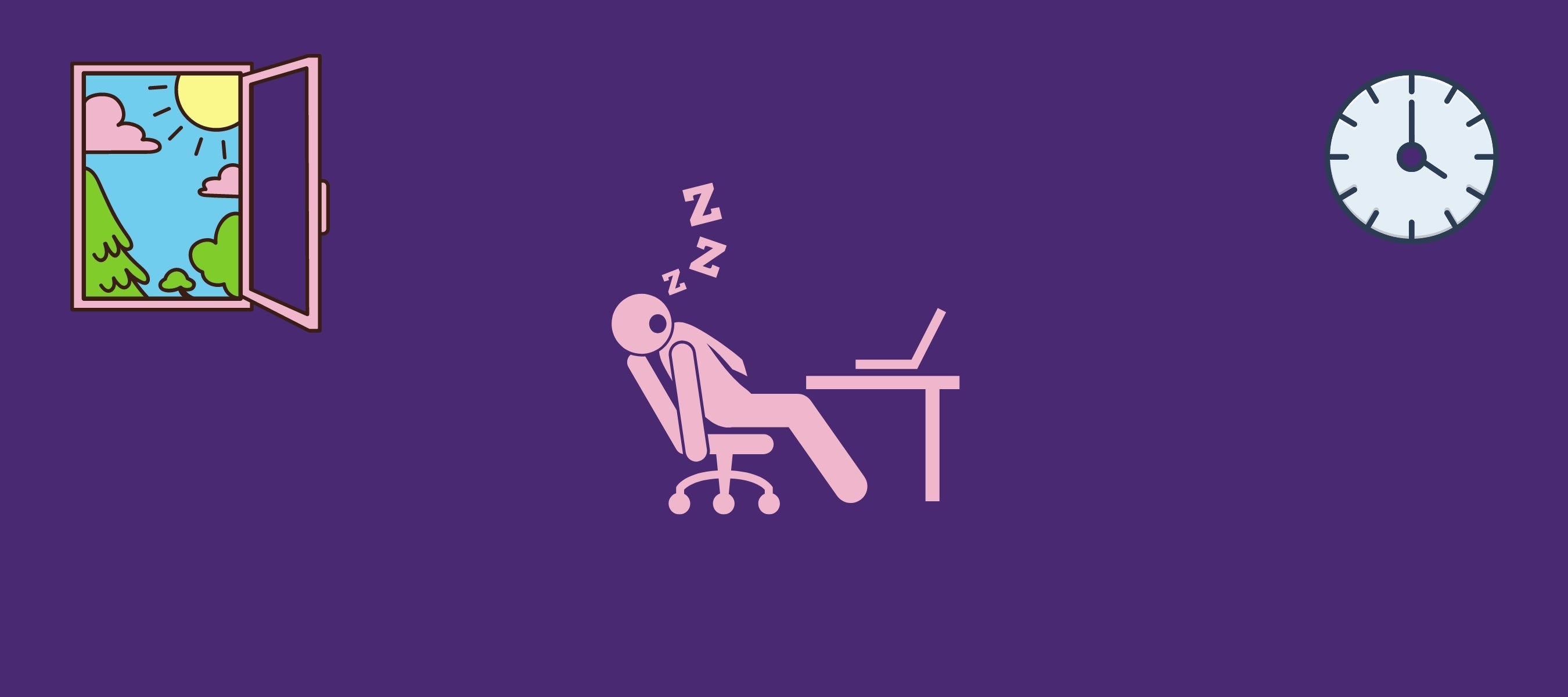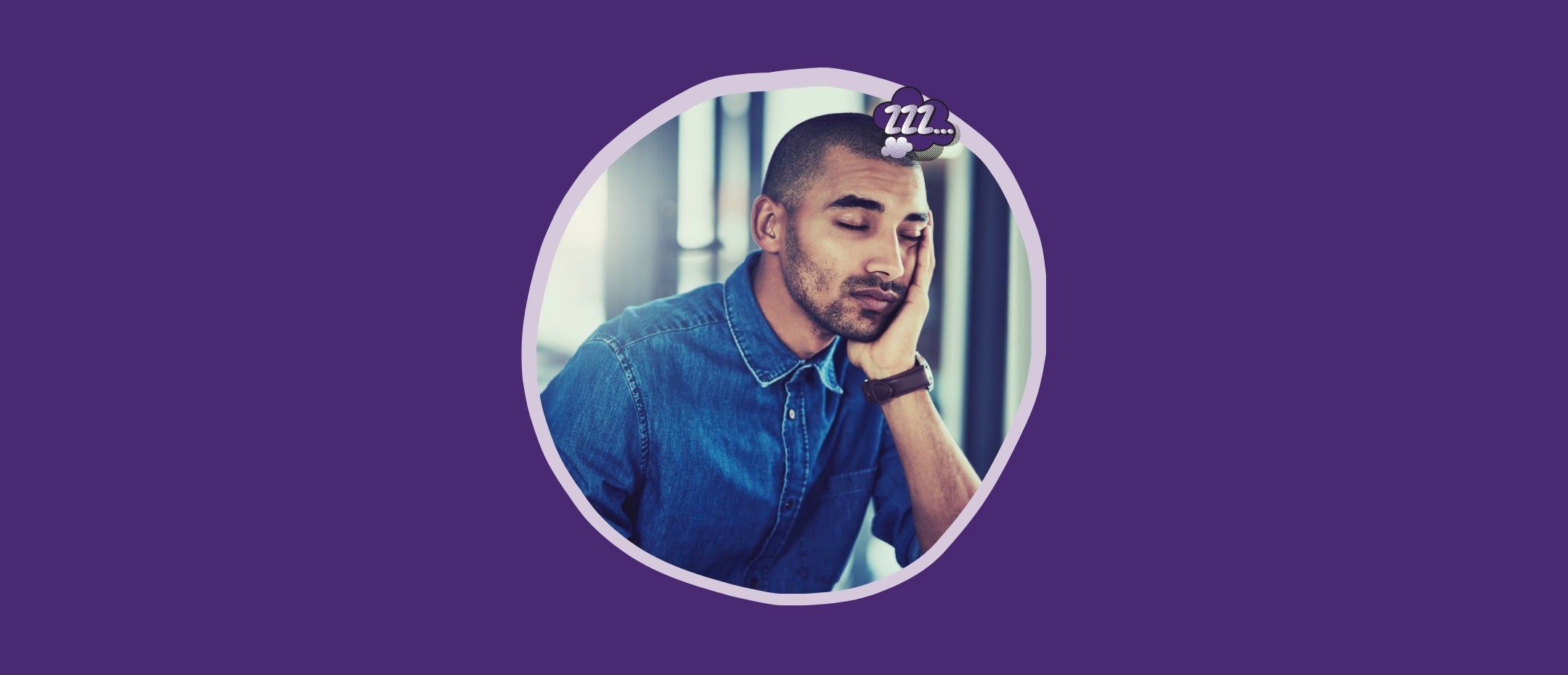Are you nodding off during the day or have great difficulty waking up in the morning, despite a good night's sleep?
You may be suffering from idiopathic hypersomnia. Polysleep tells you everything about the causes, symptoms and solutions available to you.
What is idiopathic hypersomnia?
Idiopathic hypersomnia is a neurological disorder which has for main characteristic excessive daytime sleepiness (EDS), which can cause a person to frequently fall asleep.
Two forms of idiopathic hypersomnia have so far been diagnosed:
- The first with an increase in sleep duration of 10 hours/day and more:
Sleep is normal at night, but drowsiness during the day remains too heavy.
- Then the second, without this increase (less than 10 hours/day).
This disorder is rare. According to the latest data, only 0.3% of the population suffers from it. But how do you know if you’re part of this 0.3%?
Symptoms of idiopathic hypersomnia

Not to be confused with narcolepsy
It can be easy to confuse hypersomnia with narcolepsy. Indeed, narcolepsy is characterized by periods of involuntary sleep; and this, at any time of the day, even if the affected individual is active.
Narcoleptics can also suffer from hallucinations and temporary paralysis that can last from a few seconds to several minutes after waking up. 70% of them suffer from cataplexy: the partial or total loss of muscle control.
What about hypersomnia?
In the case of idiopathic hypersomnia, the symptoms are very distinct.
It’s mainly marked by abnormally high daytime sleepiness, despite sleeping at night for the usual duration or for longer (equal to or greater than 10 hours). Nighttime sleep is also not recuperative.
This drowsiness is present throughout the day, as is the impression of never being 100% awake (hypovigilance).
In addition, idiopathic hypersomnia is also characterized by significant difficulties waking up, while often experiencing sleep drunkenness. Similarly, when a person with idiopathic hypersomnia takes naps, they are long and non-refreshing.
Multiple and complex causes at the origin of idiopathic hypersomnia

The factors causing idiopathic hypersomnia are still poorly understood. What is known is that it may be partly related to gender. Although it affects both men and women, it occurs more often in women.
In terms of the typology of the affected population, the disorder normally appears before the age of 25 and more frequently during adolescence.
The mechanisms causing hypersomnia are still obscure to science. It could, according to some, be caused by a failing wakefulness system.
According to a 2014 study conducted at the Emory University in Atlanta, some hypersomniacs produce a benzodiazepine-like compound in their brains.
As a result, this substance would behave like a sleeping pill for these people. Their cerebrospinal fluid contains a peptide that activates GABA receptors and causes the brain to fall asleep.
For 20 and 30% of patients, a family history is present. However, no genetic link has been found so far.
Indeed, diagnosing the disorder remains difficult. It can only be identified by what in medicine is called a "diagnosis of exclusion": for its presence to be proven, all other causes, such as sleep apnea, depression, or lack of sleep, must first be ruled out.
At the present time, it’s impossible to detect the disorder by its specific characteristics.
Only the prior elimination of other potential causes, followed by confirmation of abnormally high sleep or daytime sleepiness, can lead to a diagnosis of idiopathic hypersomnia.
Diagnostic procedures are also restrictive, since people suspected of suffering from this disorder often have to go to specialized institutions and undergo a long battery of tests (polysomnographic examination, MRI, and possibly psychiatric examination to exclude psychiatric hypersomnia).
Detecting the presence of idiopathic hypersomnia is therefore not so simple, even for doctors!
Real and heavy consequences for people suffering from idiopathic hypersomnia

On top of imposing a restrictive procedure on people suffering from potential idiopathic hypersomnia, this pathology subjects them to truly limiting consequences with regard to their rhythm of life.
For example, hypersomniacs are usually not allowed to drive without a doctor's permission. Thus, their condition has first of all a direct impact on their autonomy in society.
Fortunately, this problem can be partially eliminated through anti-sleep devices such as bracelets or anti-sleep earpieces.
But that's not all! Their social life is also greatly affected. Just eating out with friends can become a nightmare if the hypersomniac has to continually fight his or her desire to sleep.
Whether it’s during family or professional activities, attention deficit can, among other things, affect productivity and alertness level.
Finally, idiopathic hypersomnia can also lead to the appearance of mental health problems.
With the reduction in quality time spent with friends and family, the constant suffering they experience in their struggle to not fall asleep, and the difficulties they encounter in having a full and fulfilling work life, hypersomniacs can become depressed.
Solutions exist, but they are limited in scope

Strategies are effective, but only to a limited extent.
Faced with this disorder, which is as rare as it is incapacitating, hypersomniacs implement strategies of their own to counter the symptoms.
-
Drinking tea or coffee
The goal here is to stimulate their wakefulness in an optimal way.
Beverages such as tea or coffee contain caffeine, the molecular structure of which is similar to that of adenosine – a chemical compound found naturally in the brain and involved in the regulation of sleep.
Caffeine takes advantage of this structural similarity to attach itself to the adenosine receptors, being picked up by them, thus blocking its effect.
In this way, the brain remains awake.
However, the effect of caffeine has its limits since it’s not the same for all human beings. It depends on our genetic background, the ADORA2A gene, which determines whether or not we’re sensitive to caffeine.
Discovered by researchers in Australia in 1996, this gene is responsible for coding for adenosine receptors (known as A2A).
It exists in two forms: the T and C variants.
Since every human has an allele from each parent, an individual can have a CC, TT, or CT genotype. Other researchers, this time based in Germany, have shown that it determines whether or not we’re sensitive to caffeine.
-
Overstimulation
Another method that hypersomniacs often use is overstimulation to combat drowsiness.
So, they maintain themselves through voluntary hyperactivity. This can be first of all physical: they will tend to move a lot, and/or to do very intense activity (sports and/or very physical professional activities).
It can also be mental, such as talking a lot, or looking for activities that stimulate them intellectually to the highest degree.
They stay awake for several hours at a time. However, in the end, they are extremely tired, and this can be to their disadvantage. Fatigue can accumulate due to the fact that their sleep is not restorative, and thus possibly accentuate their daytime drowsiness.
Medical treatments for hypersomnia are still very limited

Medicine has also taken, like hypersomniacs themselves, a first avenue based on psychostimulants, including fluoxetine, or modafinil.
These strongly stimulate the attention of people suffering from idiopathic hypersomnia, and more broadly their mental activity, to counter their chronic hypovigilance, in addition to offering potential antidepressant effects against fatigue.
A second avenue is prescription amphetamines. This is a solution that remains restrictive, however, as many adjustments often have to be made before finding the right dosage.
Melatonin can also be considered for some patients and has a positive effect: it triggers sleep earlier, which can make waking up easier.
Research has also been done to counteract the GABA system by suggesting the development of treatments in the form of patches or creams.
That’s what the Emory University study mentioned above proposes, notably via flumazenil, or clarithromycin, an antibiotic which, here, acts against the functioning of the GABA receptors.
However, their results are preliminary, and the demonstrated efficacy would concern only a small proportion of individuals suffering from idiopathic hypersomnia.
So at present, there is no miracle treatment for this condition, which, moreover, will remain lifelong for 80% of hypersomniacs. 20% of cases do resolve themselves though, without science knowing why.
Solutions of varying effectiveness and more scientific research required

As you’ll have understood, idiopathic hypersomnia, which is characterized by excessive daytime sleepiness associated with non-recuperative sleep both during naps and at night, and which is combined with normal or abnormally long nocturnal sleeps (greater than or equal to 10 hours), is a condition that has a strong impact on those affected socially, professionally and mentally.
However, solutions exist such as overstimulation via physical and/or mental hyperactivity, or caffeine intake via tea or coffee consumption.
If these strategies are put in place by hypersomniacs work, they come with disadvantages, the most important of which remains a strong fatigue in the long term in the case of their voluntary hyperactivity, which can accumulate over time since when they sleep, they do not recover.
On the medical side, molecules are also available, such as psychostimulants, and more rarely, prescribed amphetamines. But these are far from ideal for treating symptoms, especially in the case of amphetamines.
There are avenues of research, notably via molecules that counter GABA receptors. However, work on these is still in its infancy and must be continued.
If you’re experiencing the symptoms of hypersomnia, we recommend that you consult a specialist on the subject as soon as possible to limit its devastating consequences.
On the other hand, if your drowsiness is due to a lack of sleep due to your mattress being unsuitable, browse through our complete catalog to discover our range of foam mattresses and order directly online!
If you liked our blog article, please don't forget to Share it with your friends by clicking the button below!










